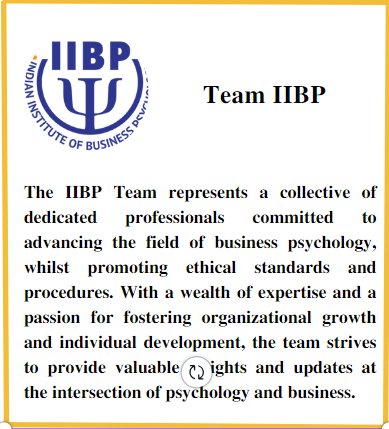“Organizations that prioritize curiosity are better positioned to adapt to change and thrive in the midst of disruption” (Smith & Brown, 2022). In the constantly evolving business landscape, a curiosity-driven leadership strategy has emerged,paving the way for constant innovation and adaptability. The critical role that it plays in steering organizations toward innovative solutions, allows firms to enable them to not only survive but also excel in grappling with ever changing transformations. The shift from traditional leadership to dynamic methods is due to implementation and importance of continuous learning, experimentation, and adaptation.
Curiosity-driven leadership embodies a transformative approach that taps into the inherent human desire to explore, understand, and learn. At its core, this style of leadership influences and develops a mindset that actively seeks out new knowledge, challenges assumptions, and embraces uncertainty. This approach is marked by traits such as imaginative, experimentative, foresighted and adaptable.
When leaders foster a culture of inquiry, it stimulates diverse thinking, leading to the cross-pollination of ideas from different disciplines. Curious minds are more likely to explore alternative solutions, ask “what if” and challenge the existing frameworks in place. This exploration often leads to the identification of more effective problem-solving approaches (Litman & Jimerson, 2004).
Such individuals are inherently motivated to seek more information to make sense of the world around them. By creating an environment that encourages asking questions and pursuing answers, leaders create a continuous cycle of learning and unlearning. For instance, allocating time for self-directed exploration and encouraging cross-functional collaboration are effective methods to cultivate a curious mindset (Hidi & Renninger, 2006). An organisation that actively works on such endeavours is Google, known for its “20% time” policy, allowing employees to dedicate a portion of their work hours to pursuing their personal curiosity-driven projects.
Curious leaders are more adept at navigating ambiguity and looking at challenges as opportunities. By actively seeking to understand shifts in markets and consumer behaviour, leaders can guide strategic decision-making. A curious mindset prompts leaders to explore various scenarios, experiment with different approaches, and remain open to adapting strategies in response to new information (Hofmann et al., 2019).
To leverage curiosity-driven leadership for innovation and adaptation, leaders must foster an environment where it becomes a core instinct. Open communication, cross-functional collaboration, and continuous learning opportunities form an important aspect of this endeavour. Leaders can create platforms for the exchange of ideas and diverse perspectives, encouraging employees to voice their questions and insights openly (Cunha et al., 2018).
Curiosity-driven leaders serve as the embodiment of the values they seek to instil. They engage in a relentless pursuit of knowledge, encourage intellectual curiosity among their teams, and set an example of fearlessly exploring new avenues. This approach not only motivates employees but also leads to a more dynamic work culture. For instance, Steve Jobs’ curiosity drove him to envision products like the iPhone that transformed industries. By embracing his own curiosity, Jobs cultivated an environment at Apple where creativity and innovation flourished, resulting in groundbreaking advancements (Isaacson, 2011).
While curiosity-driven leadership offers great potential, its implementation can encounter resistance, particularly in risk-averse organizations. Overcoming skepticism requires a multi-avenue approach. First, leaders should emphasize the evidence-based benefits of curiosity. Further, providing training and resources fosters a sense of ownership over their learning journey. Leaders also need to create a safe space where failure is viewed as a learning opportunity rather than a setback. This shift in perspective can help break the fear of taking risks that often hampers curiosity-driven initiatives (Amabile & Pratt, 2016). Leadership development programs will likely emphasize nurturing curiosity as a core competency, recognizing its potential to drive innovation and adaptability (Hülsheger et al., 2013).
Therefore, curiosity-driven leadership is not a viral, short-lived trend, but a practice that resonates deeply with the challenges and opportunities of the present and the future. By embracing curiosity as a guiding principle, leaders lay the foundation for a culture that values continuous learning and open-mindedness. From its roots in psychological and cognitive aspects to its potential to navigate change and overcome challenges, curiosity-driven leadership is an important core quality for organisations.
REFERENCES
Amabile, T. M., & Pratt, M. G. (2016). The dynamic componential model of creativity and innovation in organizations: Making progress, making meaning. Research in Organizational Behavior, 36, 157-183.
Cunha, J. V., Cunha, M. P., & Kamoche, K. (2018). Organizational improvisation: A consolidating review and framework. International Journal of Management Reviews, 20(3), 598-625.
Hidi, S., & Renninger, K. A. (2006). The four-phase model of interest development. Educational Psychologist, 41(2), 111-127.
Hofmann, D. A., & Jones, L. M. (2019). Leadership in the Digital Age: A Review and Agenda for Future Research. Leadership Quarterly, 30(1), 58-72.
Hülsheger, U. R., Anderson, N., & Salgado, J. F. (2013). Team-level predictors of innovation at work: A comprehensive meta-analysis spanning three decades of research. Journal of Applied Psychology, 98(6), 1102-1124.
Isaacson, W. (2011). Steve Jobs. Simon & Schuster.
Litman, J. A., & Jimerson, T. L. (2004). The measurement of curiosity as a feeling of deprivation. Journal of Personality Assessment, 82(2), 147-157.
Smith, A., & Brown, B. (2022). Navigating Change: The Role of Curiosity in Adaptation. Leadership Insights, 15(3), 25-36.
About The Author


